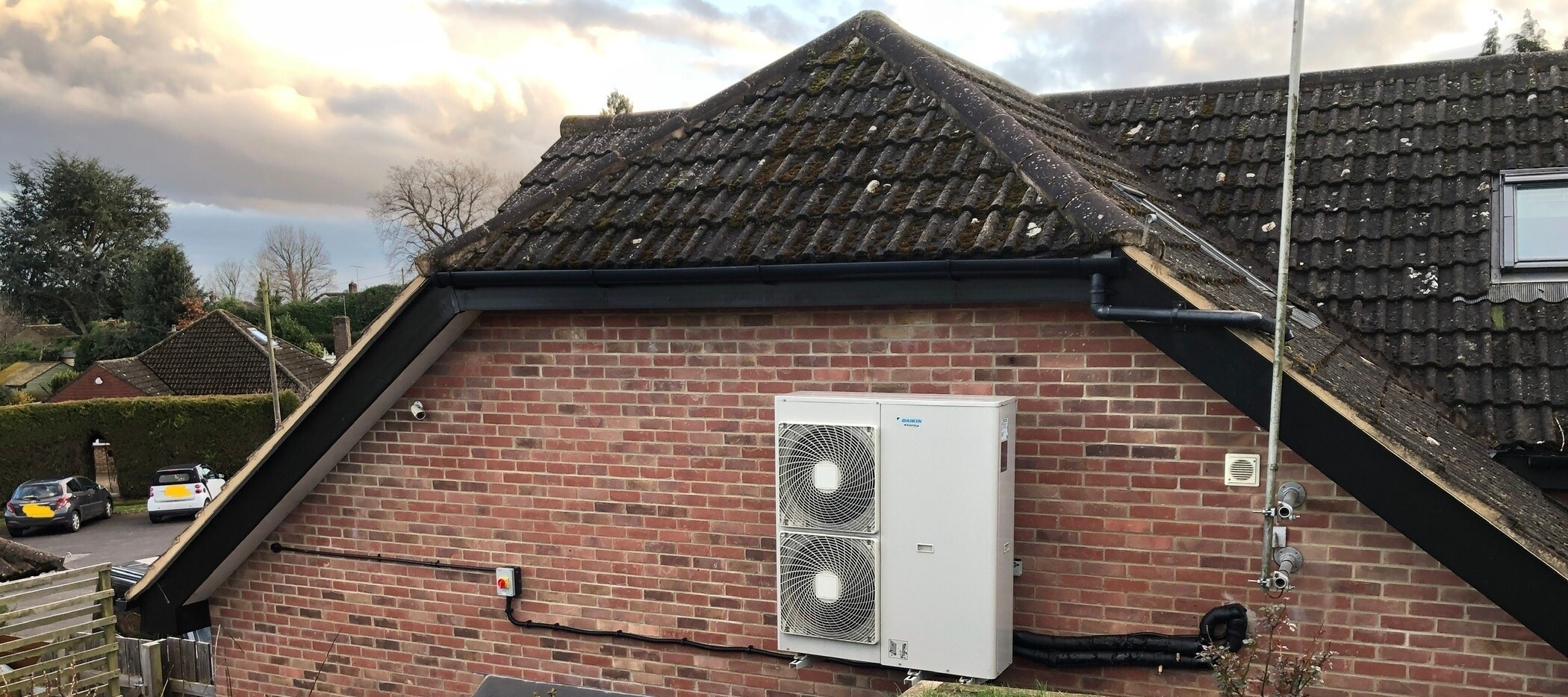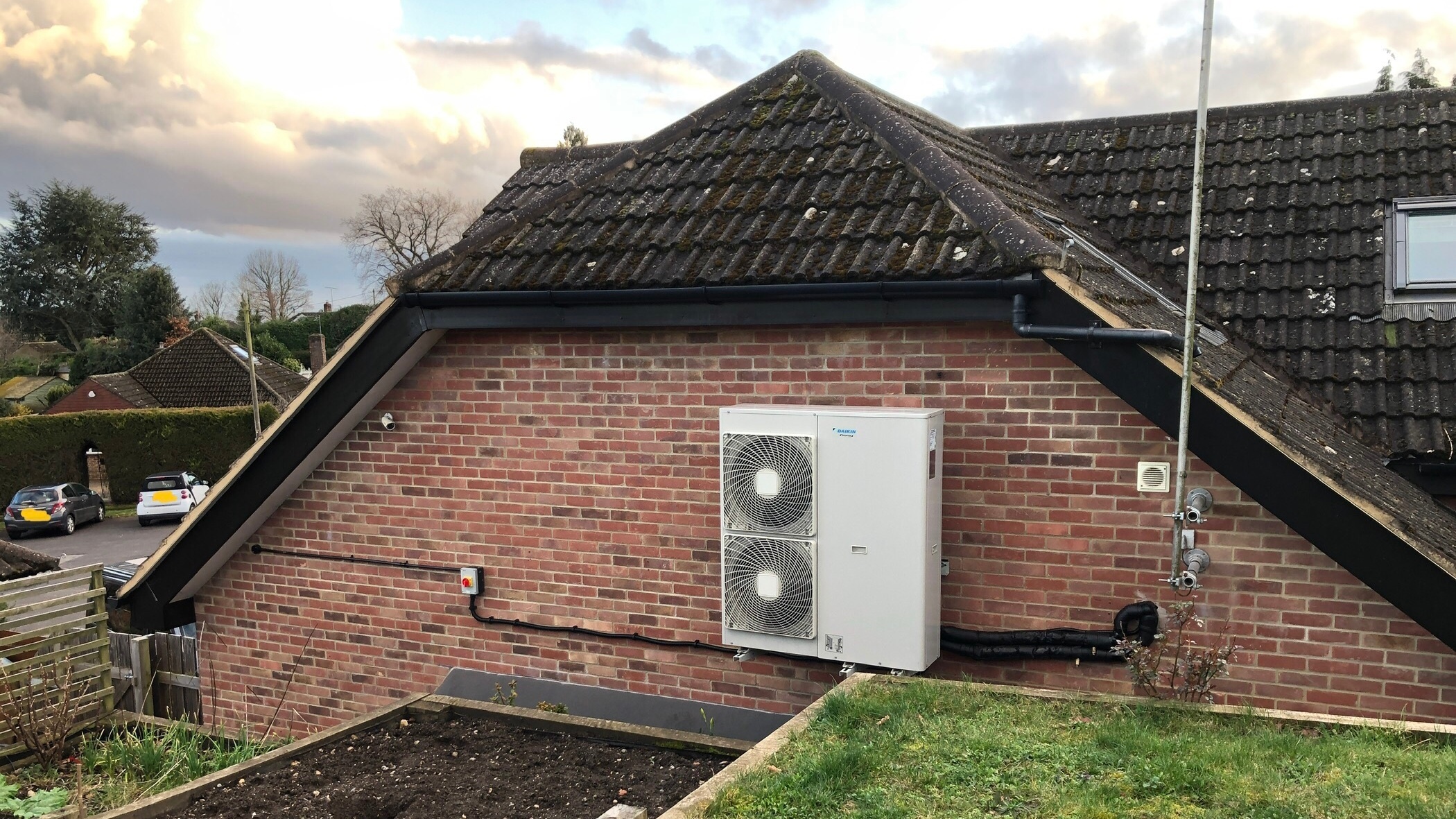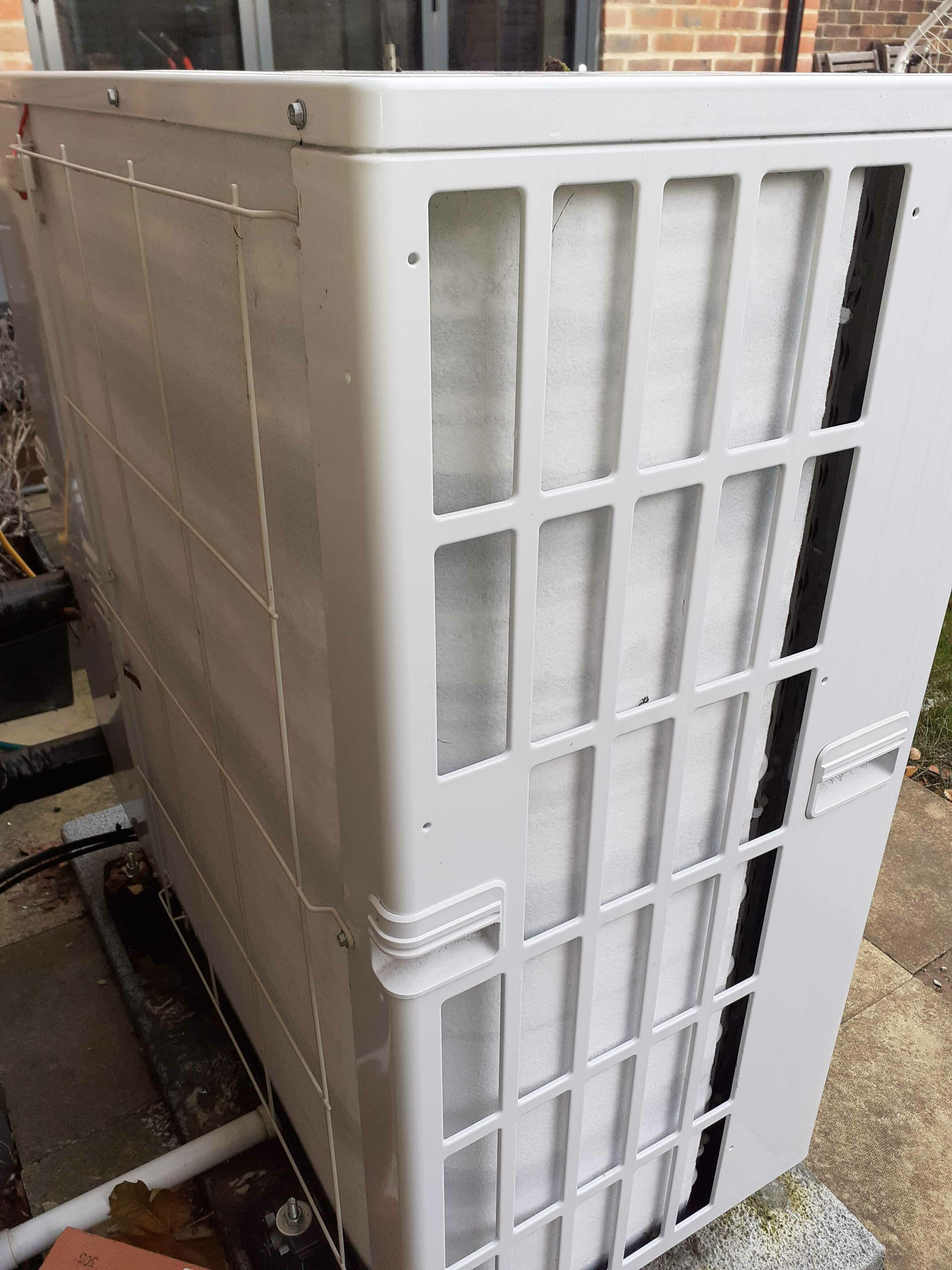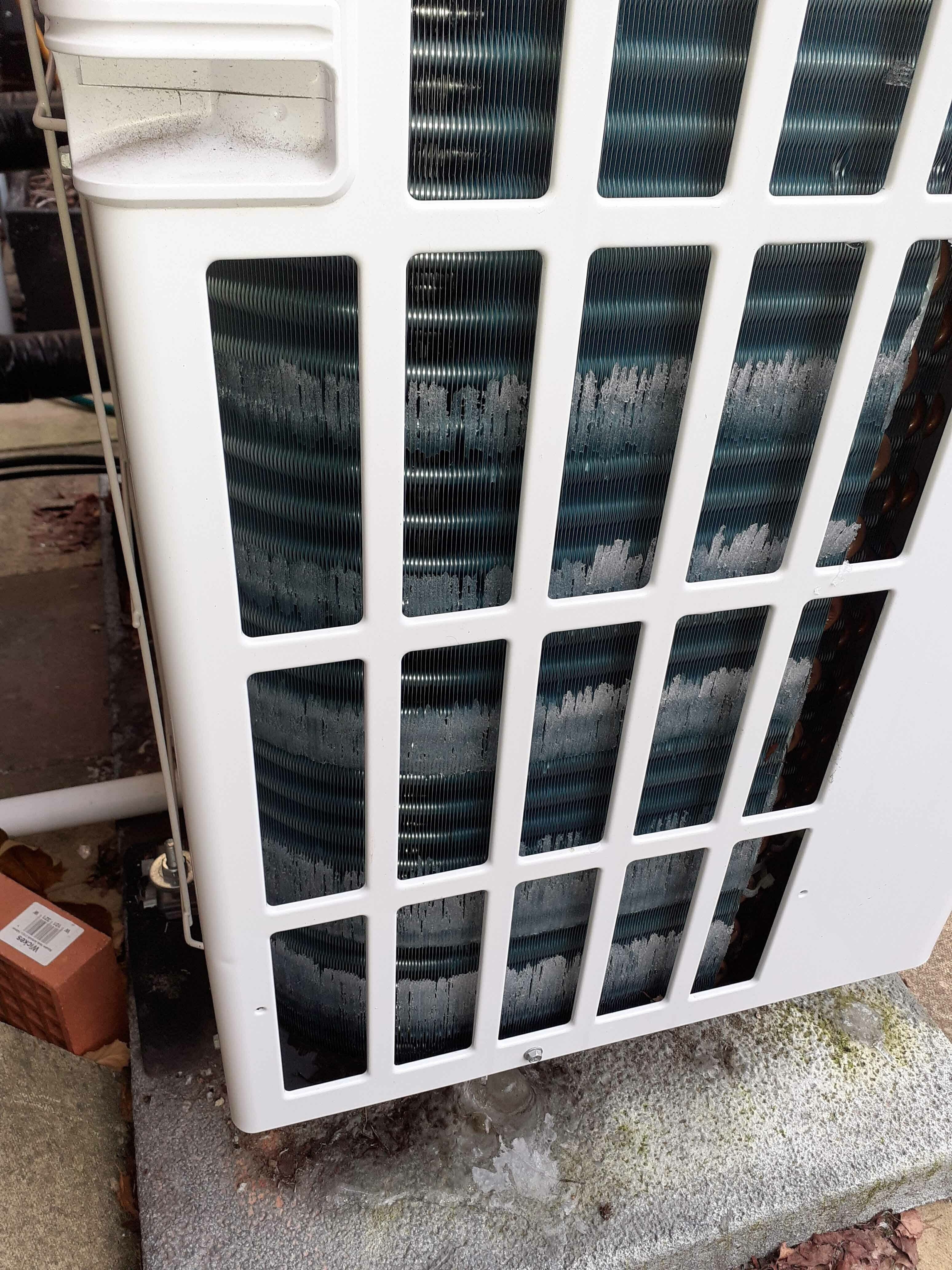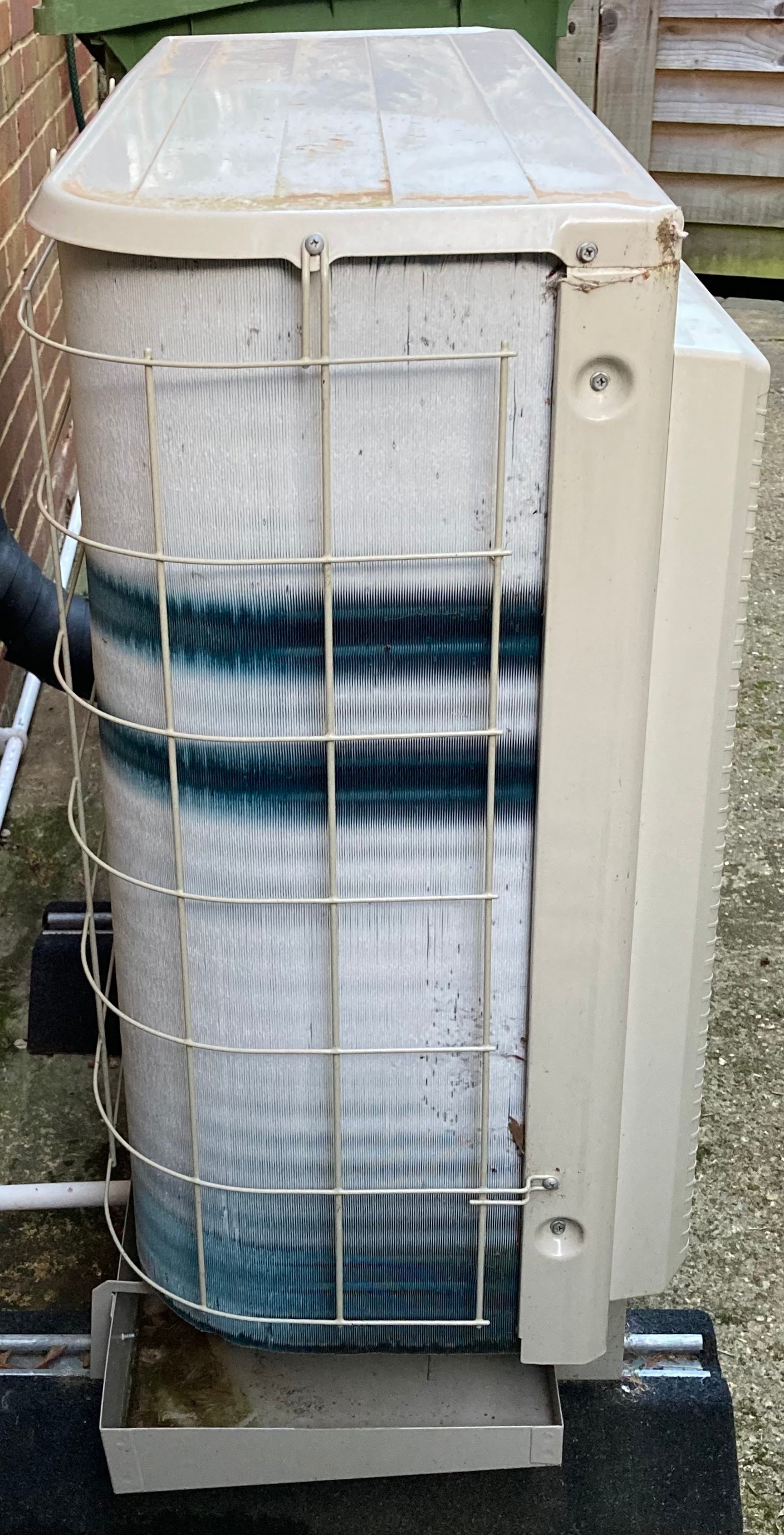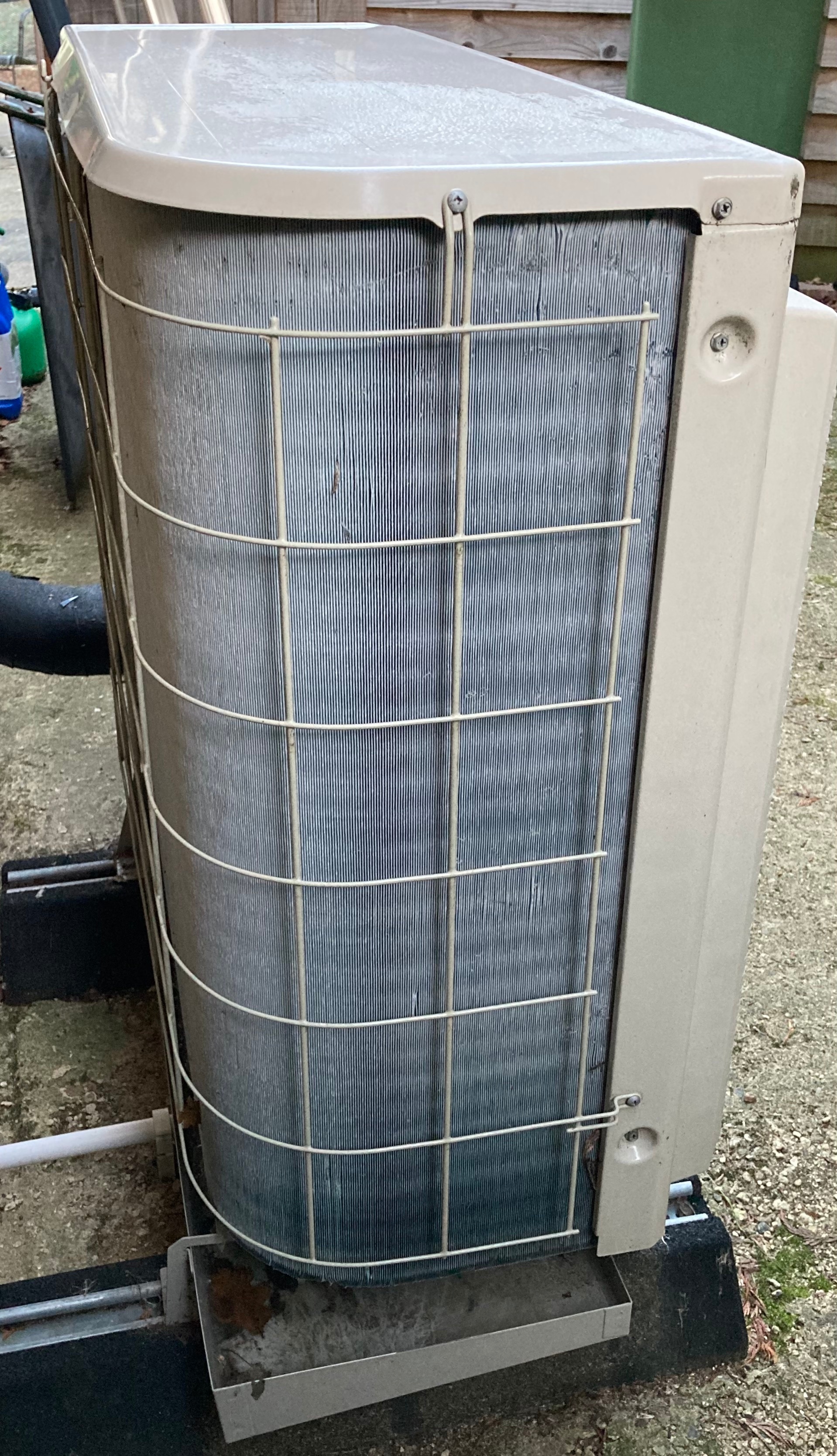Updated on 16/05/25 by Emmanuelle_OVO:
Heat Pump Plus add on now available for Vaillant heat pump owners! Find out more here…
This is a long and quite technical post
ASHP fitted – Daikin Altherma 11kw monobloc - part of the BEIS government trial with OVO
As you may be aware, I have kept a close eye on the performance of my system since this trial started, partly due to the bad experience with the first installer (Northern Gas 👎) and partly due to my instrumentation background. I have gradually improved the seasonal coefficient of performance of the installed heat pump from a COP of around 2.0 originally, up to ~2.7 when the system was refitted, and up to about 3.0 now. There is still significant room for improvement but I will need to wait until the trial with OVO is over before I embark on the next alterations (a smaller heat pump, changing a few radiators). I believe that a correctly sized heat pump would provide significant energy and financial savings.
An OVO article online about the size of heat pump a property needs, made me review the heat pump choice for my house. Over the course of the second refit of the Heat Pump circuit I discussed the findings of my heat loss reports with the installer (Reina Group), the first installer didn’t discuss the results at all and would not engage in dialogue. I thought the calculations were too high, but was reassured that heat pumps modulate their output, so if the heat demand is lower than calculated it would be ok. I have since found out that heat pumps can only modulate to about ¼ of their max. output before they have to shut off, so a 12kw heat pump can modulate down to 3kw without much detrimental impact on its performance. Hitting this sweet spot for heat pump output vs house heating demand is important if you want to get the most efficient system. If the heat pump is oversized(see 3/4 way down the article) it will continually cycle on/off (because it produces more heat than it can use and the return temp comes back high, so it turns off), which is bad for efficiency. This cycle happens in my house.
The article on the My Energy Stats website (What Size Heat Pump? - Energy Stats UK (energy-stats.uk) covers the different methods available for estimating the size of heat pump for a property, from the basic ‘age of property and its size = size of heat pump output’, through to the MCS tools used by most installers, and on to the measured heat demand (Heat Transfer Coefficient (HTC)). The HTC method is considered more accurate than the MCS because it uses measured energy data. It determines the maximum heat loss of the property by using a combination of heat in to the home (either through energy consumed, or energy into the house) and relating this to the average daily temperature demand. This method is more time consuming and complex, but can deliver more accurate results. This requires measuring the energy used to maintain the property at the required internal temperature, typically 19-21C, and relating this to the daily temperature demand (difference between inside and outside temperatures). Through the trial we are fortunate to have the meters needed to accurately measure the heat produced, making an easy and accurate assessment possible. My system now maintains the internal temperature I want (20.5C) and a local weather station logs the hourly external temperature. See My Energy Stats halfway down the article for methodology and Science Direct for further details on the HTC method.
Heat demand estimates made for my property:

2 Northern Gas house dimensions are way off, building fabric assumptions completely wrong, house survey completed in 20mins, no consultation with home owner.
3 Reina Group were on site surveying for ~2 hours, discussed some building material choices, but still managed to miss a room from their final assessment. The surveyor said during the visit he is advised to use ‘industry standard’ assumptions for u-values rather than the home owners.
Analysis of heat demand in my property
The maximum heat demand is a worse case estimate that the heat pump is expected to operate under, this will typically only occur for a few days per year. For the majority of time the heat pump is operating to a lower demand.
The maximum demand estimates vary significantly, highlighting the need to invest in this area of ASHP design to allow heat loss surveyors to get the best possible heat demand estimate if significant real-world ASHP efficiency gains are to be made.
Analysis of my 2022 data suggests the high electric consumption days consume about 10% of the total energy used. Central heating contributed around 85% of the heat pumps total output. So, 75% of the heat pumps running time, and energy usage, would be under ‘average’ conditions. This highlights the importance of having an efficient operational system under ‘normal’ conditions.
HTC Heat Loss Data
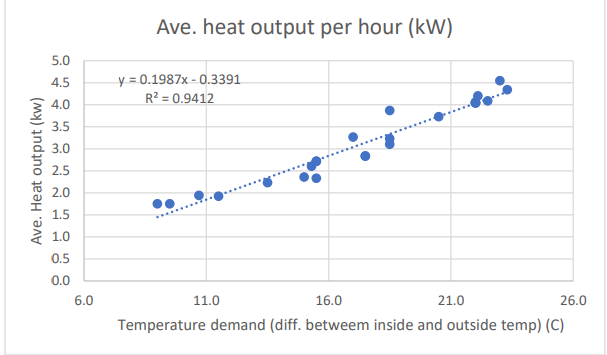
The graph shows 25 days of data analysed for the HTC calculation, through Dec 2022-Jan 2023 where we had a particularly cold two weeks, outside temperature ranged from a daily average of -2.8C to +11.5C during the analysis, Temp demand from 26C to 9C. This shows a heat transfer coefficient of 200w/DegreeC and the maximum heat demand of the house being 4.6kw, but more commonly through the winter it has been below 2.5kw. The average winter temperature for the area is 6-7C, which also happens to coincidentally be the average for this sample period. The average heat demand estimate is 0.198*14.5(temp. demand 20.5C-6C) – 0.3391 = 2.54kw.

A reminder, if the heat pump is oversized it could continually cycle on/off (because it produces more heat than it can get rid of, the return temp comes back high and it turns off), which is bad for efficiency, and what happens in my house. The maximum output from my heat pump is 11kw, the assumed minimum output is 2.75kw (assumed because I can’t find any data on this, just anecdotal comments from Heat Pump engineers on forums and a measured 4Amps being drawn by the ASHP under steady low operating conditions). You will notice that the minimum output possible by the heat pump, 2.75kw, is above the average output required, 2.5kw. I believe that this explains why my ASHP often cycles on/off, and hence does not achieve optimum efficiency.

4 Typical leaving water flow temperature around 30-35C, Weather dependent curve set at 40C@-5C/25C@20C for majority of 2022 and the HTC assessment period
The above results show the actual achieved and brochure performance figures for a range of Daikin Altherma air source heat pumps. There is a significant difference between the specified performance of the 11kw unit verses the performance of the fitted 11kw unit. This is likely due to the ASHP being oversized and cycling often. The 9kW Altherma is described as being much more efficient, typically performing 80% more efficiently. The 9kW model would be capable of maintaining the house at 20deg at an outside temperature of -18C, by extrapolating the HTC graph. The 6kw model shown would also be capable of maintaining the house temperature at the outside design temperature of -2.2C. The time taken to bring the house up to temperature from cold requires knowledge of the house thermal mass, which has not been generated here but is one possible consideration to think about. Home owners would need to be educated about the warm up reaction times for ASHP’s.
Conclusion
The real-world values for heat loss using the HTC method and the heat meters fitted through the trial show a heat loss for my property as 45% lower than those estimated through the industry standard assumptions with the MCS method. Actual heat loss at -2.5C is 4.5kw vs 7.9kw at -2.2C with the MCS approach. It would appear that the heat pump fitted to my property is around 50% over-sized. The ASHP fitted has been optimized as far as possible but the average heat loss is below the efficient operating range of the heat pump and further improved performance does not appear possible. The only way to improve performance would be to replace the ASHP unit with the correctly sized model. This could achieve annual savings of over £400 per year (calculated when I was paying 34p/kwh, it’s now more so the saving would be even greater).
Discussion
The HTC method isn’t widely used because of several factors such as access to accurate energy usage and a trial period where the house is heated to desired level for 24 hours which is not normal for a central heating system in the UK. However, this method could be more widely used, see references above (which states it can be calculated from smart meter data), and it does suggest that estimates being made for properties are still overly cautious. With further assessment it could be possible to save the home owners around 40% on their annual heating bill if the correct size heat pump is fitted. How widely spread this problem is could be investigated with the data collected through the heat pump trial, taking a sample of sites where desired indoor temperature is maintained, and using local weather data which is easily found online.
For my property, the logical step is to swap the heat pump for a smaller capacity model. It makes sense to add a factor to the HTC method, as a future owner of the house might like to maintain 22C, rather than 20.5C, but an extra 20% capacity would still only require a 6kw heat pump instead of 11kw, and operate nicely within the optimal efficiency heat output requirement for the house. If the trial were interested in extending its investigation to consider this, I would be happy to engage in dialogue for how this can be achieved.
Tagging a couple of people in who might be interested in reading this.


